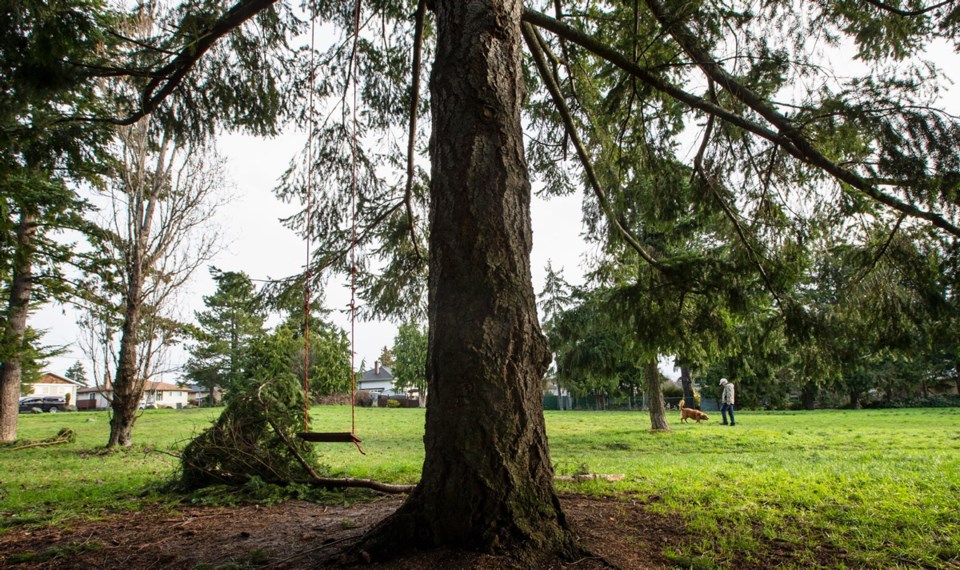Saanich’s elected officials remain optimistic that the Capital Regional District will contribute up to $2 million to help preserve a 2.2-hectare parcel of green space near Royal Jubilee Hospital.
A CRD staff report going to the district’s parks committee today says the property in the 1800-block of Kings Road doesn’t meet current criteria for a regional park, although staff acknowledge that those criteria require updating.
But Saanich Mayor Fred Haynes said the CRD parks committee and board of directors have the discretion to back the Kings Road Park project, despite the report’s findings.
“I understand that the current policy struggles to accommodate this purchase,” he said. “But I’m optimistic that conversation at the committee will be positive and the committee will find an approach to support the purchase of this very important, regional natural green asset.”
Coun. Ned Taylor voiced similar hopes, saying the property needs to be protected and preserved, and that requires the CRD to make a contribution. “You know, people have literally been advocating to save this piece of property since before I was born, and people are still showing up to the CRD building, showing up at our council chambers, advocating for this piece of property to be protected. So, now, finally we have the opportunity to do that.”
Saanich purchased the largely undeveloped land from B.C. Hydro last July for $5.5 million, but is looking to raise $2.75 million from other levels of government to offset its debt.
Community organizers say the property, which includes a 220-metre section of Bowker Creek, effectively serves as a regional park already, since it sits at the juncture of Saanich, Oak Bay and Victoria and is used by residents from all three municipalities.
In addition, it offers welcome respite to thousands of patients who visit Royal Jubilee Hospital and the nearby B.C. Cancer Agency from across the region each year, said Rebecca Sterritt, a member of the community group that’s campaigning to save the park.
“It technically is in Saanich, but truly it’s a regional asset,” she said. “It’s right beside the Jubilee Hospital. It’s used by patients and staff. We’ve got Victoria Hospice, the Cancer Agency.
“So it’s a huge opportunity to provide a nature space to people who are sick and who need the healing benefits of nature.”
Sterritt added that preserving rare green space within a rapidly densifying urban area helps fight climate change.
In the past, the strategy was to protect wilderness areas outside the city limits and let people drive to visit them, she said. “But I think the reality is that, given our climate crisis, we don’t want that. We don’t want people to be forced to get into their cars — if they can afford cars — to be constantly leaving the city limits, where we all live now, to access nature spaces. That’s not smart from a climate position. It’s not smart from an economic position.”
CRD staff, however, say the property doesn’t meet the existing land-acquisition criteria for a regional park, in part because it’s “highly disturbed” and isn’t connected to other protected areas. It also lacks “rare or unique environmental features, sensitive ecosystems or species at risk that would give more weight to such a small, fragmented parcel,” the report says.
Taylor said he understands that CRD staff are constrained by current policies and criteria, but it’s important that the region protects and preserves the natural areas and open green spaces that are left.
“There’s cities around the world that are spending millions of dollars to create green space, to create natural areas because they got rid of it all in the past. That’s not where I want to see this region end up in 10, 20, 30 years down the line.”
The land acquisition fund currently sits at $6.7 million, the staff report says. A levy adds about $3.7 million a year to the fund, which was renewed in November for another 10 years.



